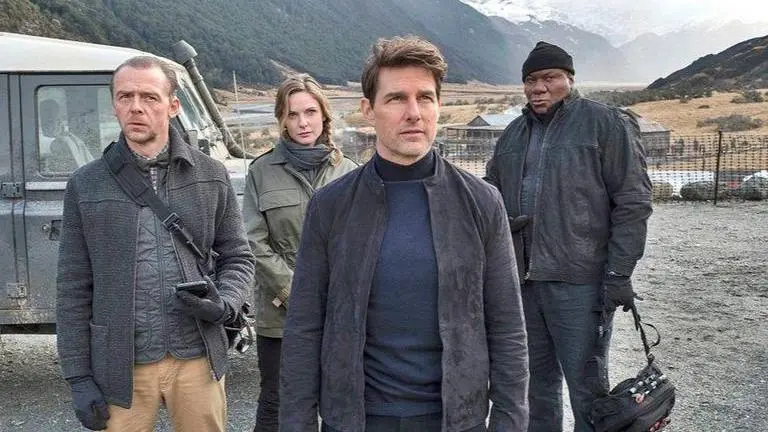Updated 11 July 2023 at 21:30 IST
How Tom Cruise starrer Mission Impossible has managed to avoid franchise fatigue
The Mission Impossible franchise has been thriving since its inception in 1996, and the same is expected of its 7th installment, Dead Reckoning Part 1.
- Entertainment News
- 4 min read

Mission: Impossible - Dead Reckoning Part 1 is set to release worldwide on July 12. The anticipation for the film is at its peak despite several postponements in the past. From its initial release date set for July 2020 to two years down the line, Ethan Hunt is geared up for the next impossible mission. There are several factors fueling the hype surrounding the action-spy franchise. However, the most significant is how Mission Impossible has managed to overcome franchise fatigue.
3 things you need to know:
- The first Mission Impossible film was released all the way back in 1996.
- Christopher McQuarrie is the first director to have made three films in the franchise consistently.
- It was adapted from the 1967 British series of the same name.
What is franchise fatigue?
After a certain point, audiences show a lack of excitement and the fans stop obsessing over studio franchises. This can result from a desire for newness and the perception that franchises are chasing money. For instance, after the tremendous performance of the first two Terminator films, which earned $520 million at the box office, the newer films did not taste success. Terminator: Dark Fate (2019), grossed $260 million and failed to break even. The fact that new Terminator movies were being made despite no novelty, contributed to the franchise's declining popularity.
(Terminator: Dark Fate became a commercial disappointment in the franchise (Image: terminator/Twitter)
Advertisement
Another example is The Fast and Furious series, headlined by Vin Diesel. Since 2001, there have been 10 titles in the franchise. It peaked in 2015 when Fast and Furious 7 made $1.5 billion at the box office globally, but revenues dipped thereafter. The departure of major cast members, on-set controversies and the notion that F&F films are 'more of the same' led to less engagement on behalf of the fandom.
Marvel Cinematic Universe is also facing similar issues which led to some of the titles performing very poorly at the box office. As a result, Marvel Studios has been reshuffling release dates of the upcoming titles to build anticipation and avoid any future loss. In addition, they started venturing into OTT web series as well, so that the commercial burden of the franchise doesn't stop their expansion. Meanwhile, Tom Cruise starrer Mission Impossible has managed to steer clear of franchise fatigue. The box office business of each film has turned out to be more than the previous one is proof.
Advertisement
(Tom Cruise and Michelle Monaghen in Mission: Impossible 3 | Image: MissionImpossible/Twitter)
How does Mission Impossible steer clear of franchise fatigue?
Tom Cruise: Enigma of the Star
Tom Cruise's Ethan Hunt is the pivot of the MI storyline. The film series is high on action and the franchise star has been posited as the one doing all of his stunts. Mission Impossible is marketed with snippets and detailed breakdowns of stunts where Cruise is in complete focus.
For instance, in MI7, Cruise has driven a bike off a cliff and fought on a train that is minutes away from crashing into a valley. In the previous films, Cruise has done everything -- from jumping from skyscrapers, holding his breath underwater, hanging from the Burj Khalifa to clinging on to a flying plane. This has resulted in the creation of a larger-than-life persona of Cruise who has managed to become the biggest draw for the franchise.
(Hayley Atwell and Tom Cruise in a still from Mission: Impossible - Dead Reckoning Part 1 | Image: MissionImpossible/Twitter)
Mission: Impossible is caught up with time
While the first MI film was about a rogue CIA operative trying to kill Ethan, the second film was about terrorists trying to destroy the world with a deadly virus. In MI3, Ethan hangs up his boots, then comes out of retirement to take on more international enemies. The franchise this way has gone from local to global, both in scale and audience reach.
Story-wise, from Ghost Protocol to Fallout, the Mission Impossible franchise delved deeper into geopolitics. Notably, the ideas are simple yet far-fetched, with Ethan trying to avert a possible World War III in one of the films. The world-building as it may seem is realistic while the films delve into topical subjects. With the addition of elements such as corrupt governments, technologically enhanced weapons and rogue agents, Mission Impossible stays fresh.
(Tom Cruise in the Mission: Impossible - Ghost Protocol | Image: MissionImpossible/Twitter)
Mission Impossible doesn't abandon its core
Mission Impossible started off as an action-spy film and has stayed loyal to its core theme. Through the years, the makers have ensured that while the high-octane action sequences are taken a notch higher with every film, the focus remains on espionage, technology and developing political intrigue. With this, the Tom Cruise starrer franchise has managed to draw its loyal fanbase to the theatres while still appealing to the newer audience.
Published By : Nitish Vashishtha
Published On: 11 July 2023 at 21:30 IST




